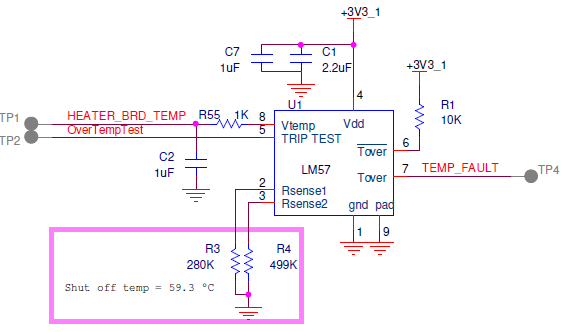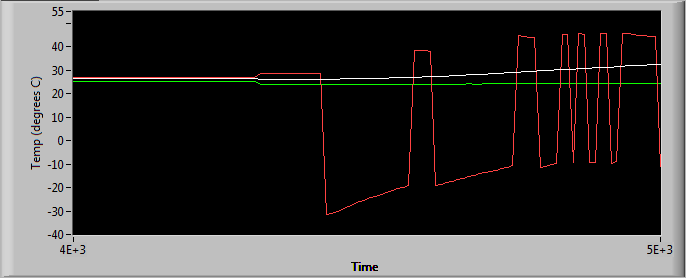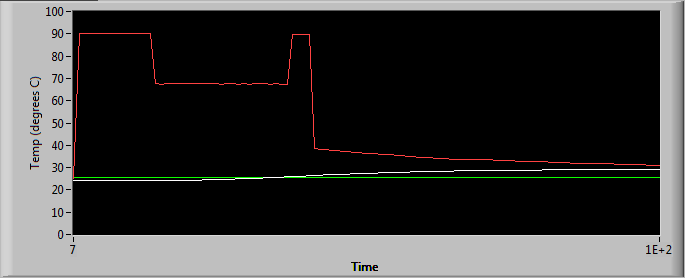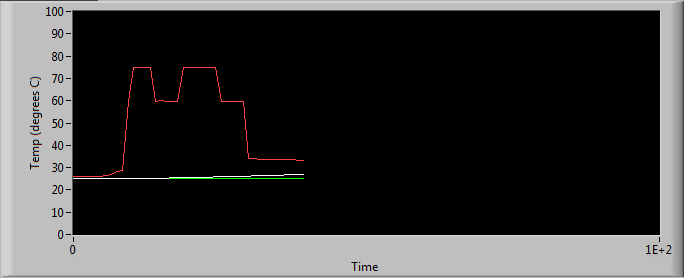I am using an LM57 device to initiate an automatic thermal override shutdown of an induction heater. Here is the LM57 portion of schematic.
R3: 280K, ±1% ±100ppm/°C digikey part number: 541-280KHCT-ND calculated temp drift from 24° to 75° is ≈ 3 ohm
R4: 499K, ±1% ±100ppm/°C digikey part number: 541-499KHCT-ND calculated temp drift from 24° to 75° is ≈ 5 ohm
this gives a set point of 59.33°C and a gain curve of J3.
There is a uController monitoring the Vtemp and the temp accuracy has been verified in a thermal chamber. The controller is able to run a 'trip test' and the results are as expected, the heater turns off.
The chip is physically located near the induction heater and the temperature is reported properly when the heater is both off and on.
*********************
The problem is this: if the heater is on, the LM57 does not activate the Tover outputs until 75°C. however, if the temp reported is over 60°C and the heater is turned off(manual override) the Tover outputs are immediately activated and remain active until the temp drops T(hyst).
additional information:
I wanted to test moving the set point out to 90°C so I replaced R4 with 340k ohm and the result was very strange. When the heater is on the temp reported was incorrect ( ≈ 60°low), but when the heater is off the temp reported is correct. see below: (red trace)





